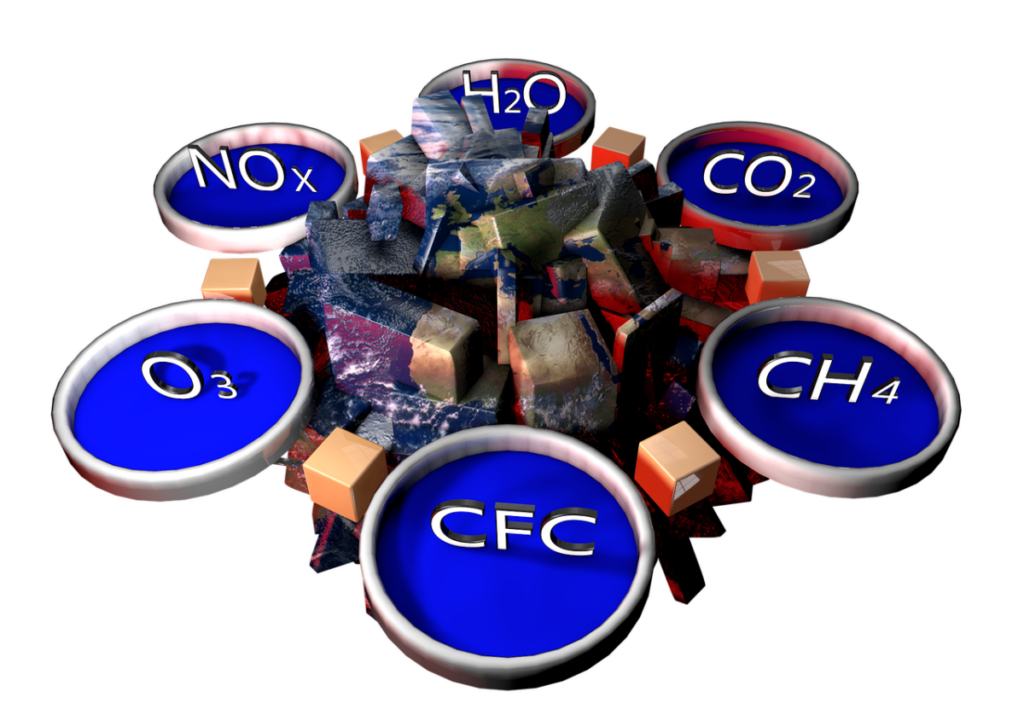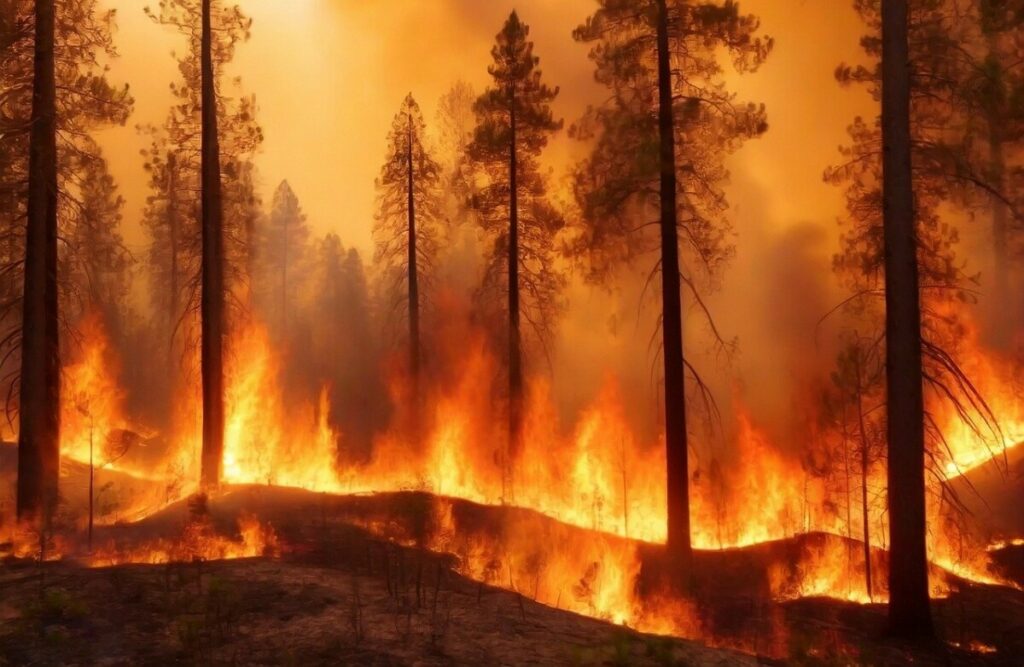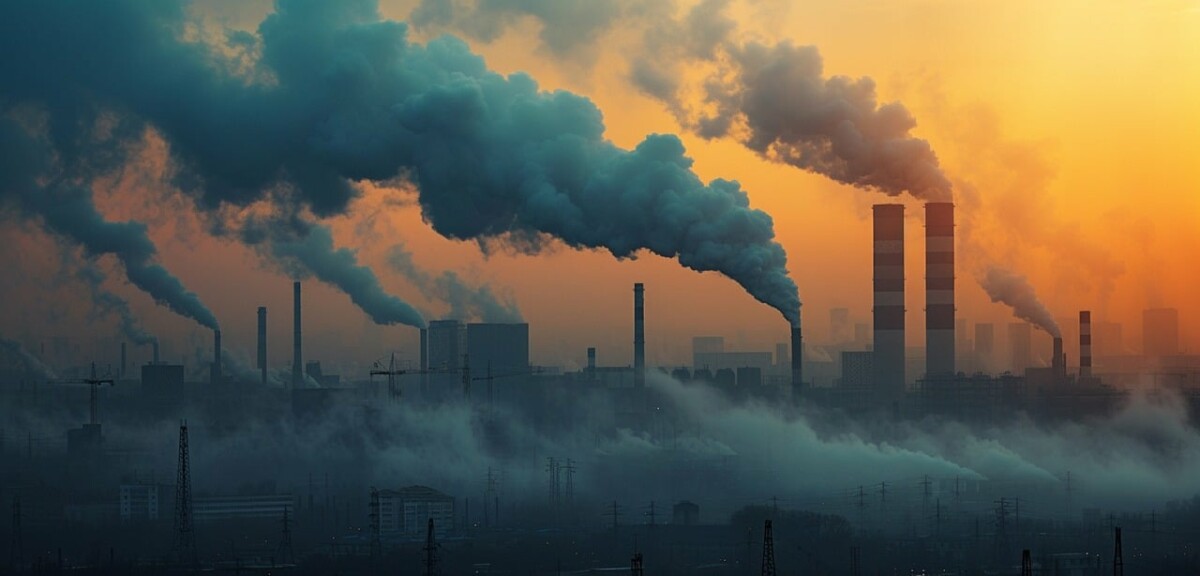Is H2O a Greenhouse Gas?
Firstly understanding the intricacies of our climate system often raises the question: Is H2O a greenhouse gas? This question delves into the heart of atmospheric science and global climate change. While carbon dioxide and methane frequently dominate discussions about greenhouse gases, the role of water vapor often slips under the radar. However, it plays a crucial part in shaping the Earth’s climate. This article will explore the greenhouse properties of H2O, its interaction with other gases, and its overall impact on our climate system.
The Nature of Greenhouse Gases
What Defines a Greenhouse Gas?
First and foremost, greenhouse gases are compounds in the atmosphere capable of trapping heat. In fact these gases absorb and emit infrared radiation, leading to the warming of the Earth’s surface. Commonly recognized greenhouse gases include carbon dioxide, methane, nitrous oxide, and sulfur hexafluoride. Furthermore these gases vary in their global warming potential and their concentrations in the atmosphere.
Is H2O a Greenhouse Gas?
Indeed, H2O is a greenhouse gas. Water vapor is the most abundant greenhouse gas in the Earth’s atmosphere. Its role is significant in regulating the Earth’s temperature. When discussing the greenhouse effect, it’s essential to recognize that water vapor’s ability to trap heat is substantial. Thus, is H2O a greenhouse gas? Yes, undeniably, it is.
The Role of Water Vapor in Climate
Water Vapor’s Influence
Additionally, the amount of water vapor in the atmosphere directly influences the climate system. Warmer air holds more water vapor, leading to a positive feedback loop. As the air temperature increases, more water evaporates, enhancing the greenhouse effect. This phenomenon explains why understanding water vapor is vital when considering climate change.
Interactions with Other Greenhouse Gases
Moreover, water vapor interacts with other greenhouse gases, amplifying their effects. For instance, the burning of fossil fuels increases carbon dioxide levels, which in turn elevates atmospheric water vapor concentrations. This synergy between gases highlights the complexity of the greenhouse effect and underscores the importance of considering all factors, including H2O, in climate models.

Water Vapor and Human Activities
Sources of Water Vapor
Human activities significantly contribute to the amount of water vapor in the atmosphere. While natural sources like evaporation from oceans and rivers are primary, activities such as industrial processes and agricultural activities also play a role. These activities increase the amount of water vapour released into the air, further impacting global temperatures.
Feedback Mechanisms
The concept of water vapor feedback is crucial in climate science. This mechanism involves temperature increases that cause higher evaporation rates, leading to more atmospheric water vapor. This, in turn, traps more heat, further increasing temperatures. Understanding this feedback loop is essential for climate scientists studying the global climate change dynamics.
Impact of Industrial Revolution
Since the industrial revolution, human activities have dramatically altered the Earth’s climate. The burning of fossil fuels has significantly increased greenhouse gas emissions, including those that indirectly raise water vapor levels. This historical context is vital for understanding the current state of our climate system.
H2O a Greenhouse Gas FAQs
Is H2O the most important greenhouse gas?
While not often highlighted, water vapor is indeed the most important greenhouse gas due to its abundance and significant warming effect on the Earth’s atmosphere.
How does water vapor contribute to the greenhouse effect?
Water vapor absorbs and emits infrared radiation, trapping heat in the atmosphere and contributing to the warming of the Earth’s surface.
What is the relationship between carbon dioxide and water vapor?
The increase in carbon dioxide due to human activities leads to higher temperatures, which cause more evaporation and thus more atmospheric water vapor, enhancing the greenhouse effect.
How do human activities affect water vapor levels?
Human activities, such as industrial processes and burning of fossil fuels, increase the amount of water vapour in the atmosphere, contributing to climate change.
What is the water vapor feedback loop?
The water vapor feedback loop describes the process where higher temperatures lead to more evaporation, increasing water vapor levels and trapping more heat, further raising temperatures.
In conclusion, understanding the role of H2O as a greenhouse gas is essential for comprehending the broader picture of climate change. Its interactions with other greenhouse gases and its significant impact on the Earth’s climate system highlight the need for continued research and awareness.
Understanding the Greenhouse Effect

The Natural Greenhouse Effect
The natural greenhouse effect is a fundamental process that keeps the Earth’s climate stable. Without it, the Earth would be too cold to support life as we know it. Greenhouse gases in the atmosphere, including water vapor, trap heat from the Sun, maintaining the average temperature of the Earth at a habitable level. Water vapor, being the most abundant greenhouse gas, plays a pivotal role in this natural effect by trapping infrared radiation emitted from the Earth’s surface.
Enhanced Greenhouse Effect
However, human activities have led to an enhanced greenhouse effect. This occurs when the concentration of greenhouse gases, such as carbon dioxide and methane, increases due to burning of fossil fuels and other industrial processes. This enhancement leads to higher global temperatures and disrupts the natural balance. The increase in atmospheric water vapor due to these activities amplifies the warming, creating a feedback loop that exacerbates climate change.
The Science Behind Water Vapor
How Water Vapor Traps Heat
Water vapor traps heat through a process known as radiative forcing. It absorbs outgoing infrared radiation from the Earth’s surface and re-emits it in all directions, including back towards the surface. This trapped heat raises the temperature of the atmosphere and the Earth’s surface. The effectiveness of water vapor in trapping heat is one reason why it is considered a powerful greenhouse gas.
Variability of Water Vapor Concentrations
The concentration of water vapor in the atmosphere can vary widely based on temperature and humidity levels. Warmer temperatures lead to higher water vapor concentrations, as warm air can hold more moisture. This variability is crucial in understanding climate dynamics, as small changes in air temperature can lead to significant changes in water vapor levels, thereby influencing the overall greenhouse effect.
Human Contributions to Water Vapor Levels

Direct and Indirect Contributions
Human activities contribute to water vapor levels both directly and indirectly. Direct contributions include activities like irrigation and combustion, which release water vapor directly into the atmosphere. Indirectly, the emission of other greenhouse gases through the burning of fossil fuels raises temperatures, which increases evaporation rates and, consequently, water vapor levels. This indirect contribution is significant, as it ties water vapor levels to broader anthropogenic impacts on the climate.
Industrial Revolution and Beyond
Since the industrial revolution, the rise in greenhouse gas emissions has been unprecedented. The combustion of coal, oil, and natural gas for energy and the extensive use of power plants have released vast amounts of carbon dioxide and other gases. These emissions have not only increased global temperatures but also altered the carbon cycle, leading to increased levels of atmospheric water vapor. This period marked the beginning of significant human influence on the earth’s climate.
Impacts of Increased Water Vapor
Climate System and Global Warming
Increased water vapor in the atmosphere significantly impacts the climate system. As water vapor levels rise, the global warming potential of the atmosphere increases. This potential refers to the capacity of greenhouse gases to trap heat and raise the Earth’s temperature. Water vapor, by enhancing this potential, contributes to global climate change. The increased amount of water vapor amplifies the warming effect of other greenhouse gases, creating a compounded impact on global temperatures.
Positive Feedback Loop
A critical aspect of water vapor’s role in climate change is its contribution to a positive feedback loop. Higher temperatures lead to more evaporation, increasing water vapor levels, which in turn trap more heat and further raise temperatures. This loop can lead to accelerated warming, making it a crucial factor in climate models and predictions. Climate scientists emphasize understanding this feedback to predict future climate scenarios accurately.
H2O a Greenhouse Gas FAQs Continued

How does water vapor interact with other greenhouse gases?
Water vapor enhances the warming effects of other greenhouse gases by increasing the overall heat-trapping capacity of the atmosphere. This interaction creates a synergistic effect, amplifying the impact of gases like carbon dioxide and methane.
Why is water vapor often overlooked in climate discussions?
Water vapor is often overlooked because it is not directly emitted in significant quantities by human activities compared to gases like carbon dioxide. However, its role as an amplifier of warming makes it a critical component of the greenhouse effect.
What measures can reduce the impact of water vapor on climate change?
Reducing emissions of other greenhouse gases can help lower temperatures and consequently reduce the amount of water vapor in the atmosphere. Mitigation efforts focusing on carbon dioxide and methane are essential to managing water vapor levels indirectly.
How do climate models account for water vapor?
Climate models incorporate water vapor by including its feedback mechanisms and interactions with other greenhouse gases. These models use complex algorithms to simulate how water vapor levels respond to temperature changes and other climatic factors.
In conclusion, the role of H2O as a greenhouse gas is profound and multifaceted. Understanding its interactions with other greenhouse gases and its feedback mechanisms is crucial for addressing climate change effectively. The next sections will delve deeper into the impacts on human health, ecosystems, and potential mitigation strategies.
Impacts on Human Health and Ecosystems
Human Health
Increased water vapor levels have direct and indirect impacts on human health. Higher humidity levels can exacerbate respiratory issues, especially for individuals with asthma and other lung conditions. Additionally, warmer temperatures and higher humidity can increase the prevalence of heat-related illnesses, such as heat exhaustion and heatstroke. These conditions pose significant health risks, particularly for vulnerable populations like the elderly and children.
Ecosystems and Biodiversity
Furthermore, the rise in atmospheric water vapor affects ecosystems and biodiversity. Increased temperatures and humidity can alter habitats, leading to shifts in species distributions. For example, many plants and animals may migrate to cooler areas, disrupting existing ecosystems. This migration can lead to a loss of biodiversity as species that cannot adapt quickly enough face the threat of extinction.
Agricultural Impacts
The agricultural sector is also impacted by changes in water vapor levels. Higher humidity and temperature can affect crop yields, potentially reducing the availability of food. Certain crops may experience increased stress from heat and require more water, complicating irrigation efforts. These changes can have cascading effects on food security and agricultural economies globally.
Mitigation and Adaptation Strategies

Reducing Greenhouse Gas Emissions
To mitigate the effects of increased water vapor, reducing emissions of other greenhouse gases is essential. Strategies include transitioning to renewable energy sources, improving energy efficiency, and adopting sustainable agricultural practices. Reducing emissions of carbon dioxide, methane, and nitrous oxide can help lower global temperatures, indirectly reducing the amount of water vapor in the atmosphere.
Enhancing Natural Sinks
Another approach is to enhance natural sinks that absorb greenhouse gases. Forests, wetlands, and oceans act as significant carbon sinks, sequestering carbon dioxide from the atmosphere. Protecting and restoring these ecosystems can enhance their capacity to absorb greenhouse gases, helping to mitigate climate change impacts.
Technological Innovations
Technological innovations also play a critical role in addressing climate change. Advances in carbon capture and storage (CCS) can help reduce the amount of greenhouse gases released into the atmosphere from industrial processes. Additionally, the development of more efficient and sustainable technologies can reduce the carbon footprint of human activities.
Adapting to Changes
Adaptation strategies are equally important. Communities and governments must prepare for the impacts of climate change by developing robust infrastructure, improving healthcare systems, and implementing policies that protect vulnerable populations. Building resilience to climate-related risks ensures that societies can better cope with the changes brought by increased water vapor and other greenhouse gases.
Water Vapor and Climate Feedbacks

Positive and Negative Feedbacks
Climate feedbacks involving water vapor can be both positive and negative. While the positive feedback loop involving increased evaporation and higher temperatures has been discussed, it is also important to consider potential negative feedbacks. For instance, increased cloud cover resulting from higher humidity can reflect incoming solar radiation, exerting a cooling effect on the Earth’s surface. However, the net effect of water vapor feedbacks remains predominantly positive, contributing to global warming.
Role in Climate Models
Climate models incorporate these feedback mechanisms to simulate future climate scenarios. By understanding the complex interactions between water vapor, temperature, and other climate factors, scientists can make more accurate predictions. These models are crucial for informing policy decisions and guiding efforts to mitigate and adapt to climate change.
H2O a Greenhouse Gas FAQs Continued
What are the natural sources of water vapor?
Natural sources of water vapor include evaporation from oceans, lakes, and rivers, as well as transpiration from plants. These processes are part of the natural water cycle and contribute significantly to atmospheric water vapor levels.
How does water vapor influence weather patterns?
Water vapor plays a crucial role in weather patterns by contributing to cloud formation and precipitation. Changes in water vapor levels can affect rainfall distribution and intensity, influencing weather events such as storms and droughts.
Can reducing water vapor levels help combat climate change?
Directly reducing water vapor levels is challenging due to its natural abundance and role in the water cycle. However, mitigating other greenhouse gas emissions can help control water vapor levels indirectly by reducing global temperatures and evaporation rates.
What is the relationship between water vapor and the ozone layer?
Water vapor can influence the ozone layer by participating in chemical reactions in the stratosphere. Increased water vapor in the upper atmosphere can lead to the formation of compounds that deplete ozone, affecting the protective layer that shields the Earth from harmful ultraviolet radiation.
How does water vapor contribute to the natural greenhouse effect?
Water vapor is a significant contributor to the natural greenhouse effect. It traps heat in the atmosphere, helping to maintain the Earth’s average temperature. Without water vapor, the Earth’s surface would be much colder and less hospitable for life.
In conclusion, the role of H2O as a greenhouse gas is multifaceted and impactful. Understanding its interactions, feedback mechanisms, and the broader implications for human health, ecosystems, and climate change mitigation is essential. The next sections will explore further details on mitigation strategies, the historical context of water vapor in climate science, and the future outlook for climate change.
Historical Context of Water Vapor in Climate Science

Early Understanding
Historically, the role of water vapor in climate science has been recognized for centuries. Early scientists observed that moist air tended to retain heat better than dry air, leading to the understanding that water vapor contributed to the natural greenhouse effect. Over time, advancements in technology and atmospheric science have allowed for a deeper understanding of water vapor’s role in climate dynamics.
The Industrial Revolution’s Impact
The industrial revolution marked a significant turning point in human influence on the climate. The rapid increase in the use of fossil fuels for energy production led to a dramatic rise in greenhouse gas emissions, including carbon dioxide and methane. These changes affected the amount of water vapor in the atmosphere indirectly by raising global temperatures and increasing evaporation rates. The historical data shows a clear correlation between industrial activities and rising water vapor levels, highlighting the interconnectedness of human activity and climate change.
Recent Decades
In recent decades, the focus on climate change has intensified. Studies conducted by institutions like the Intergovernmental Panel on Climate Change (IPCC) and the U.S. Environmental Protection Agency (EPA) have emphasized the importance of understanding all greenhouse gases, including water vapor. These studies have provided a comprehensive view of how human activities impact the climate, stressing the need for immediate action to mitigate these effects.
Future Outlook and Mitigation Strategies
Long-term Projections
Looking to the future, climate models predict that if current trends in greenhouse gas emissions continue, the temperature of the atmosphere will continue to rise, leading to increased water vapor levels. This positive feedback loop could result in more extreme weather events, rising sea levels, and significant impacts on ecosystems and human societies. The need for robust mitigation strategies is more pressing than ever.
Policy and International Cooperation
International cooperation and policy initiatives are crucial for addressing climate change. Agreements such as the Paris Agreement aim to limit global temperature increases by reducing greenhouse gas emissions. Countries are encouraged to adopt renewable energy sources, enhance energy efficiency, and implement sustainable practices in agriculture and industry. By working together, the global community can make strides in mitigating the impacts of increased water vapor and other greenhouse gases.
Technological Advancements
Innovations in technology will play a key role in the future of climate change mitigation. Carbon capture and storage (CCS), advancements in renewable energy, and improvements in energy efficiency are just a few examples of how technology can help reduce greenhouse gas emissions. Investing in research and development of new technologies is essential for creating a sustainable future.
Community and Individual Actions
Community and individual actions also contribute to the broader effort to combat climate change. Simple steps such as reducing energy consumption, using public transportation, and supporting sustainable products can collectively make a significant impact. Educating and empowering individuals to take action is an essential part of the solution.

H2O a Greenhouse Gas Conclusion
In conclusion, understanding the question, is H2O a greenhouse gas, reveals a complex and critical component of our climate system. Water vapor, as the most abundant greenhouse gas, plays a significant role in regulating the Earth’s temperature. Its interactions with other greenhouse gases, contributions to feedback loops, and impact on human health and ecosystems underscore its importance in climate science.
Addressing the challenges posed by increased water vapor levels requires a comprehensive approach, including reducing emissions of other greenhouse gases, enhancing natural sinks, and developing innovative technologies. By understanding the historical context, current impacts, and future projections, we can better prepare and adapt to the changes in our climate system.
Now Discover Does Geothermal Energy Cause Pollution?
Finally the journey towards a sustainable future involves global cooperation, informed policy decisions, technological advancements, and individual actions. Furthermore recognizing the role of water vapor in the broader context of greenhouse gases is a crucial step in this journey. Through continued research, education, and proactive measures, we can mitigate the effects of climate change and work towards a healthier planet for future generations.
Recent Posts
Understanding Energy and Electricity: The Power For Progress
Energy and Electricity Energy and electricity are integral components of modern life, powering everything from homes and businesses to transportation and communication. Without them, the...
The Future of Wind Energy The future of wind energy is set to play a critical role in addressing global energy needs while combating climate change. As renewable energy sources like wind and...


